
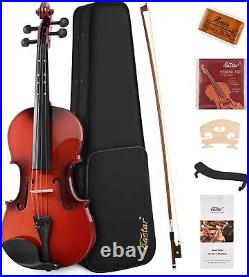
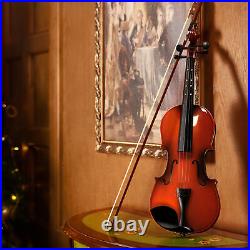
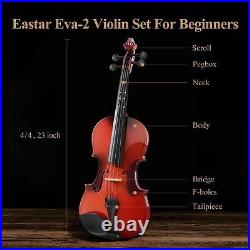

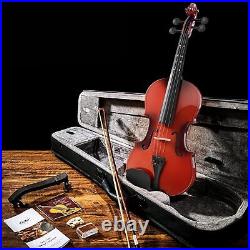
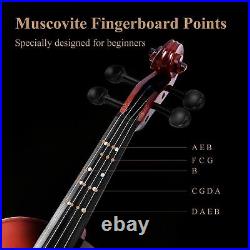


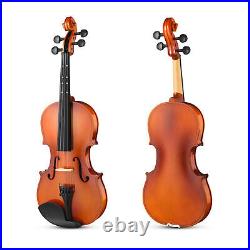
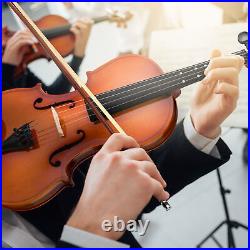
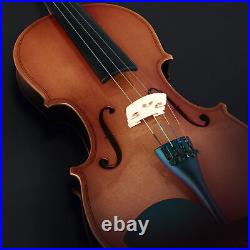

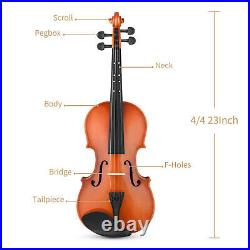
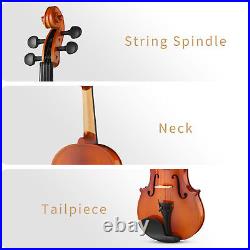

You should know about what the size of violin. Violins are available in 8 different sizes: 4/4 (also called full size), 3/4, 1/2, 1/4, 1/8, 1/10, 1/16 and 1/32. Size 4/4 is the biggest and size 1/32 is the smallest. To measure what size violin best suits you. You need to know the length between your neck and the middle of your left-hand palm. The violin size determined by the neck/mid-palm approach would be the biggest size students should use. Innovative use of finger plates inlaid with muscovite to help students quickly find the appropriate position to better master the violin playing skills. Unbleached Mongolian horsehair, natural, tough. The violin bow is a consumable item, please pay attention to two points. 1: The bow is a relatively fragile accessory. If it is used improperly, the bow of the bow will break or partially fall off. The bow lacking part of the bow can be used continuously. 2: The new bow is not able to sound, you need to rub the rosin powder to have a sound. The bridge should be left high and low right, and the bridge should coincide with the midpoint of the vi hole of the violin. When you follow the bridge, you must loosen the violin string. After placing the bridge in place, the string is inserted into the limit of the bridge, and the tuning can be used normally. The function of the fine adjustment knob is to help the violinist to make parts for tuning. The tuning of the violin is difficult. First, loosen the fine adjustment knob, and then adjust the violin neck knob to about 10 cents lower than the standard tone. Press the top knob to fix the pitch, then gently Tighten the fine adjustment knob until the pitch is exactly positioned. It is recommended to adjust AD first and then adjust GE. You can adjust the tightness of the chin rest with a small screwdriver, or you can change the sapling of jujube or ebony according to your own style.
